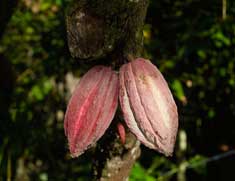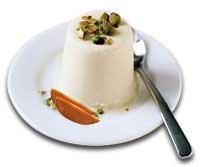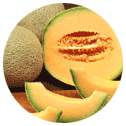 Full List of Fruits
Full List of Fruits  Sapodilla Fruit
Sapodilla FruitSapodilla
The sapodilla Fruit is a chewing gum component and also the source of chicle. Fruit may be round to oval-shaped or conical, and 2 to 4 inches in diameter. Small brown downy fruit with orange flesh which has a caramel Taste. The plant was used as the base for chewing gum from Sapodilla. The flesh with soft brown of the sapodilla tastes a bit like a sweet mix of brown sugar and root beer.
The fruit Nature may in round, oblate, oval, ellipsoidal, or conical. While smooth-skinned it is coated with a sandy brown. The flesh ranges in color from yellowish to dark-brown and sometimes reddish-brown in colour. Some fruits are seedless But some Fruits may be from 3 to 12 seeds which are easily removed as they are loosely held in a spiral of slots in the center of the fruit.
The species is found in forests where it has actually been cultivated since ancient times. It was introduced long ago in tropical America and the West Indies. Early in colonial times, it was passed to the Philippines and later it was adopted everywhere in the Old World tropics.


The crushed seeds have a diuretic action are claim to expel bladder and kidney stones. A and Daily of lower blood pressure was avoided by sweetened the combination decoction of sapodilla and chayote leaves. The seed paste of the sapodilla seeds is applied on stings and bites from venomous animals.
Click on the below Sapodilla you wish to find about
1.Brown Sugar
 Introduced in the year 1948,Fruit is medium to small, 2 to 2-1/2 inches long, nearly round. Skin is light, scruffy brown. Flesh pale brown, fragrant, juicy, very sweet and rich, texture slightly granular. Quality is very good. The tree bearing this variety is tall and bushy. The fruit is granular, sweet, juicy and extremely fragrant.
Introduced in the year 1948,Fruit is medium to small, 2 to 2-1/2 inches long, nearly round. Skin is light, scruffy brown. Flesh pale brown, fragrant, juicy, very sweet and rich, texture slightly granular. Quality is very good. The tree bearing this variety is tall and bushy. The fruit is granular, sweet, juicy and extremely fragrant.2.Prolific
 The Prolific varieties of sapodilla has smooth pinkish-tan flesh when mature. The fruits are round to conical and are long and broad, they be likely to loose much of the furry texture on the skin. Trees are heavy bearers. It is sweet, juicy and extremely delicious to taste. The tree bearing this variety bears fruits early, consistently and heavily.
The Prolific varieties of sapodilla has smooth pinkish-tan flesh when mature. The fruits are round to conical and are long and broad, they be likely to loose much of the furry texture on the skin. Trees are heavy bearers. It is sweet, juicy and extremely delicious to taste. The tree bearing this variety bears fruits early, consistently and heavily.3.Russel
 The russel variety was introduced in the year 1935. It is a large, almost round fruit, which ranges from around 3 to 5 inches in diameter and length. It is a mildly fragrant variety, has a granular texture and is flavour rich and sweet. Skin is scruffy brown with gray patches. Its ripens starts from December to March.
The russel variety was introduced in the year 1935. It is a large, almost round fruit, which ranges from around 3 to 5 inches in diameter and length. It is a mildly fragrant variety, has a granular texture and is flavour rich and sweet. Skin is scruffy brown with gray patches. Its ripens starts from December to March.4.Tikal
 Tikal was mainly special in the United States but its origin is also Mexico. The Tikal variety fruits are ovoid in shape, but the fruit fat at one end like a top. This variety was a commercial varieties planted in Florida for the first superior, but its popularity was a introduction of larger more productive cultivars.. The fruits ripen from December to March. The tikal variety ripens early and has an excellent flavour.
Tikal was mainly special in the United States but its origin is also Mexico. The Tikal variety fruits are ovoid in shape, but the fruit fat at one end like a top. This variety was a commercial varieties planted in Florida for the first superior, but its popularity was a introduction of larger more productive cultivars.. The fruits ripen from December to March. The tikal variety ripens early and has an excellent flavour.1.Sapodilla Nutrition facts
A Sapodilla is:
 The fruit has a high tanning substance, To stop diarrhea, the raw fruit is boiled and the decoction is consumed. A mixture of sapodilla fruit and flowers is inspired to prevent and get release from any pulmonary complaints.
The fruit has a high tanning substance, To stop diarrhea, the raw fruit is boiled and the decoction is consumed. A mixture of sapodilla fruit and flowers is inspired to prevent and get release from any pulmonary complaints.
 Old yellow leaves is prepared the cold Decoction is taken to prevent, cough and diarrhea.h
Old yellow leaves is prepared the cold Decoction is taken to prevent, cough and diarrhea.h
 A special tea prepared from the bark of the tree, which is beneficial to provide relief from diarrhea and dysentry
A special tea prepared from the bark of the tree, which is beneficial to provide relief from diarrhea and dysentry
 The latex derived from the tree is used to fill tooth cavities in the tropics
The latex derived from the tree is used to fill tooth cavities in the tropics
2.Food and Nutrition
| Nutritive value per 100 g of Sapodilla | ||
| Principle | Nutritive value | |
| Protein | 0.44 g | |
| Carbohydrate | 19.9 g | |
| Calcium, Ca | 21 mg | |
| Iron, Fe | 0.80mg | |
| Magnesium, Mg | 12mg | |
| Potassium | 193 mg | |
| Sodium, Na | 12mg | |
| Copper, Cu | 0.086 mg | |
| Vitamin C | 37.4mg | |
| Thiamin | 0.058 mg | |
1.Sapodilla Souffle
Ingredients:
- 1 cup mashed ripe sapodilla
- ½ cup heavy cream
- ¼ cup milk
- 1 tsp ground cinnamon
- 1 tsp carambola juice (you can substitute lemon juice)sugar, salt to taste
- 3 egg whites, whipped until stiff but not dry
- ¼ cup butter, melted
Directions:
Heat Oven at 300°F . In a container, mix sapodilla, milk and cream. Cook the mixture for10 minutes in a low temperature of heat, stirring constantly. Add cinnamon, carambola juice, sugar and salt for your taste. Cool until mixture is at room temperature. Carefully fold the cooked mixtures in egg whites. Turn into small soufflé dishes, 4 x 2 x 1½. Roast 25 minutes. Clash top with melted butter. Serve immediately.2.Sapodilla Kulfi (Indian ice cream) :
Ingredients:
- 12-oz can evaporated milk
- 14-oz can sweet condensed milk
- 1 pint heavy whipping cream
- 3 slices white bread, soaked in milk and squeezed to remove as much liquid as possible
- 2 cups sapodilla puree
- 1 tsp vanilla extract
- 20 almonds, blanched and peeled, optional
- l½ cup pistachios, optional
Directions:
Heat the milk in a saucepan over medium heat and stir continuously until it comes to a boil. Reduce the heat and add the sweetened condensed milk, cooked and mashed sapodilla, sugar, cardamom powder, almonds, raisins, pistachios, cashew nuts, dates and figs.Simmer the mixture for 10 minutes, stirring occasionally. Remove the pan from the heat and let the mixture cool down to room temperature. Pour the cooled mixture into a blender and blend until smooth. Pour the mixture into kulfi molds and freeze for 6-8 hours or until frozen solid. To serve, unmold the kulfi onto a chilled plate, garnish with dry fruits and serve..The inner membrane of the fruit was pale yellow with a beautiful star-shaped seed pattern. We cut the fruit into half moons and bit it in the middle and had to wash our mouths immediately - it had the strongest mouth-puckering astringency we've ever tasted! Actually the sapodilla has to ripen after it has been picked until it becomes, very soft. It becomes creamy and sweet like its cherimoya and soursop.
Another piece of trivia: the sapodilla tree, common origin place for sapodilla was mexico but it has spread through some tropical countries like India and the Philippines, is full of latex. In fact, a lot of chewing gum is made from the latex found in its bark. The name of the tree is called chiku it specially in india, which is how Chiclets got their name.
If you have ready access to the fruit there are numerous ways to serve it-battered and fried, stewed with lime juice and ginger, pulped and added to cakes, fermented to make wine, and even to replace apples in pie. But since I come across worm-free and ready-to-eat specimens so rarely, I'm content to simply indulge in them chilled. Do take care with the seeds though; some have a little hook-like protrusion that can snag on your throat if you accidentally swallow them.
Very unpleasant. Besides fruit, the sapodilla tree gives us one of life's staples. The sap is collected much like latex tapped from rubber trees. This sap is a white, chewy substance called chicle, formerly the main component in chewing gum. Apparently, gum is now made with synthetic rubber, but I say bring chicle back.





















